
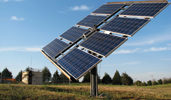
‘Sustainable’ is one of those buzz words that gets bandied about nowadays whenever government types talk about anything to do with the world’s energy supply. But how does the idea of sustainable energy apply to us in South Africa, not only as electricity consumers which we all are, but in the engineering community as well?
Sustainable energy defined
As Wikipedia puts it: “Sustainable energy is the provision of energy that meets the needs of the present without compromising the ability of future generations to meet their needs. Sustainable energy sources are most often regarded as including all renewable energy sources, such as hydroelectricity, solar energy, wind energy, wave power, geothermal energy, bio-energy and tidal power. It usually also includes technologies that improve energy efficiency.
“This sets sustainable energy apart from other renewable energy terminology such as alternative energy and green energy, by focusing on the ability of an energy source to continue providing energy. Sustainable energy can produce some pollution of the environment, as long as it is not sufficient to prohibit heavy use of the source for an indefinite amount of time. Sustainable energy is also distinct from low-carbon energy, which is sustainable only in the sense that it does not add to the CO2 in the atmosphere.”
In a South African context, the importance of sustainable energy is threefold. Over and above the need to control our greenhouse gas emissions, we must overcome the challenges of providing electricity to rural areas and lessening our reliance on Eskom.
With an estimated 46% of South Africa’s people residing in rural areas, the problems involved in supplying them with electricity are certainly not trivial, particularly given the vast geographical areas involved. Nor can the importance of electricity supply to these people be underestimated. This goes way beyond simply the provision of light and heat: in an age when information is becoming a more and more vital commodity, access to sources such as the Internet becomes ever more crucial. When considering the difficulties in supplying these far-flung regions with utility power, it becomes patently obvious that sustainable energy is the way to go.
Eskom’s inability to meet the country’s demand for electrical power has been oft discussed and much publicised in recent years, and is set to continue into the foreseeable future. While this gives homes and industry headaches, it also provides business opportunities. When rolling blackouts and load shedding were at their worst in 2008, sales of generators skyrocketed and suppliers who scrambled desperately to meet the sudden demand reaped immediate rewards. These same suppliers were then burdened with excess stock when load shedding was discontinued.
The reluctance to be reliant on Eskom is also driving the uptake of renewable energy alternatives, albeit in less of a ‘boom or bust’ fashion. There is a gradual convergence of technologies, awareness and monetary incentives that is serving to grow this market. Going hand in hand with this are energy saving initiatives that have the added benefit of slashing electricity bills. To Eskom’s credit, it has instituted policies that address these issues, but are they enough?
Gaining a local perspective
In order to develop an understanding of the issues specific to the local market, Dataweek sat around the table with a few key industry players. The attendees were Erich Nast, field applications engineer at Avnet Kopp; Brian Mostert, general manager of Clearline Protection Systems; Jacendra Naidoo, chief sales and marketing officer at Kgwanyape Energy Solutions; Stephen Austin, partner and professional electrical engineer at Attilla Inova Engineering; and Irvan Damon, ambassador of the Sustainable Energy Society of Southern Africa (SESSA).
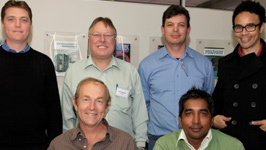
Avnet Kopp is a broad line distributor of electronic components and a familiar name to Dataweek readers, with a number of suppliers catering to the sustainable energy market. Clearline is an established maker of lightning and surge protection devices but has recently broadened its horizons into alternative energy, having developed several solar solutions for domestic housing, traffic control centres and upmarket lodges. Kgwanyape Energy Solutions carries out sustainable energy projects and manufactures products used to enhance energy efficiency. Attilla Inova is an engineering company with expertise in the engineering and environmental consulting sectors.
SESSA is a key enabler in the sector and an important interface between government and industry. The organisation has a number of responsibilities in this role: it helps Eskom execute its rebate programmes, lobbies on behalf of industry and engages with government, big business and parastatals in order to grow the sector. It also has an ombudsman who is instrumental in maintaining norms and standards, and ensures that if end users contract a SESSA member, they have recourse in case of any disputes.
According to Damon, “What we have done is create a home for people to compete evenly, so when we get tenders, everyone has an opportunity, from the small guy who does less than a megawatt to the one that does a hundred megawatts. For me, that is the strength of SESSA as a non-profit organisation, to be able to move in and out and create opportunities for members on a level playing field.”
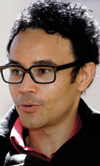
Show me the money!
According to Mostert, cost is a key factor when convincing people to adopt sustainable energy technology, and as soon as money is mentioned, the horizons or the timelines change. This is a sentiment echoed by Naidoo. “Corporates are interested and are funding projects but they expect the solution to pay for itself within 24 months, so this reduces the actual capital investment,” he says. “We find that the high-impact projects, where they are going to experience a large improvement, are largely subsidised by government. Unfortunately, the near-term financing expectations of the smaller projects, or ‘low-hanging fruit’ if you will, restrict the market.”
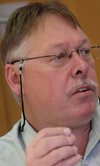

To incentivise its customers to conserve energy, Eskom incepted the Integrated Demand Management (IDM) programme, which makes funds available to its clients in support of reduced energy demand or consumption. The website www.eskomidm.co.za is the portal for those wishing to know more about the IDM. The programme has five funding models:
* The rebate model is structured around an incentive scheme, in which a rebate is paid directly to consumers who convert their inefficient technologies to energy saving solutions, provided the products and suppliers are registered with the programme.
* The ‘Standard Offer,’ for customers with a potential load saving of 50 kW to 1000 kW. This model was developed to streamline the project approval process and timeframe, and to facilitate a quicker payment process.
* The Esco model targeted at energy services companies (Esco) which are specialists in energy efficiency, and who submit projects with a potential load saving of 100 kW or more.
* The self-funding model which results in positive energy reduction through modifying customer electrical usage patterns supported by the implementation of IDM programmes to the mutual benefit of Eskom and the customer, but funded through other means than that of the IDM funding mechanisms.
* The customer model, which is designed to allow electricity end-users to participate in energy reduction initiatives of their own.
A ‘virtual power plant’ project has also been launched in the Lonehill and Fourways suburbs of Johannesburg to test load limiting technology in the form of the electricity demand display instrument (eddi). Specific streets and housing complexes within these areas have been invited to participate in the pilot project, the aim of which is to limit the amount of electricity supplied to households during high-constraint periods.
The technology also provides residential consumers with a practical tool for monitoring and controlling their electricity consumption. The device can be plugged into any wall socket in the home and can be moved from one room to another. By switching electrical appliances on and off, participants can see, in real-time, how their total consumption varies. Residents are thus empowered to make their own decisions about how to reduce their household’s demand for electricity.
The pilot participants have the choice as to which appliances to use during load limit periods. As long as they comply with the required load limit, they will not be load shed. However, when a household does not comply with the load limit, that individual house is load shed.
While these initiatives demonstrate Eskom’s intent and have contributed to a demonstrable increase in the number of sustainable energy installations, the reality on the ground paints a less than rosy picture, according to the round-table panellists.
For starters, Eskom has reduced the rebate twice in quick succession – first on 29 April and again on 3 June this year. Not only does this make the rebate scheme less attractive to new entrants, it also hits existing participants where it hurts most – in the pocket. The IDM has a finite amount of money in its coffers and it works on a ‘first come, first served’ basis with an eight week administration period. This means that customers who bought into the concept expecting a certain rebate will ultimately receive less money back than they bargained for. Add to this the fact that the scheme offers the option of paying the rebate directly to the end-user or to the supplier/installer, and these reductions are certain to leave a bitter taste in many mouths. Because the IDM has a finite amount of money available, SESSA is actively involved in supporting the local manufacturing sector beyond the rebate.
Eskom differentiates between high-pressure and low-pressure solar water heaters: low-pressure units are typically used in houses with simple plumbing systems such as those found in rural areas, while high-pressure systems are prevalent in urban areas.
“When you consider the low-pressure units,” says Damon, “those customers usually do not place much of a load on the grid. By comparison, the customers with high-pressure systems typically also have many other energy consuming devices such as kettles, ovens, stoves, garage doors, maybe a second geyser etc. It is surely the latter type that should be targeted with a specific consumer tone to entice them to buy into solar water heating, since they have a larger aggregate effect on energy consumption. “Over and above this, the potential danger exists that the low-pressure community may be substituting electricity with bio-mass.” Damon believes that key energy players should engage more actively with industry stakeholders to apply what is being learnt to the market.
Another issue involves administration of the measurement and verification process for the IDM’s Standard Offer programme. Under this scheme, Eskom aims to achieve demand-side savings by paying for verified energy savings using a pre-determined and pre-published rate in c/kWh for the implementation of an approved technology. According to Mostert, when explaining to potential customers the procedures they must follow in order to submit their claims and have them verified, many of them lose interest and the discussion ends right there.
‘Sexifying’ energy savings
Undoubtedly one of the biggest challenges facing Eskom and government in trying to promote energy savings is striking the right tone with consumers. Sure, there are those of us who would do our part to save the environment even if it cost a bit more – the sort who diligently separate their rubbish into ‘paper’, ‘plastic’ and ‘glass’. But the other 99% of us need to be coaxed.
And it is not enough to tell people they can save ‘up to x percent’ on their electricity bill every month. First of all, many consumers are sadly ill-equipped to calculate their energy savings themselves and need to be spoon fed. Secondly, exaggerated claims in the press do not help the situation. As Austin points out: “You see a lot of these brochures or adverts that say ‘save 80% of your power’ trying to convince you to buy a heat pump based on the fact that it absorbs heat out of the air. But a heat pump’s peak efficiency is 80%; it is not an average. So the advertiser’s claim is not only misleading, it’s downright false.”
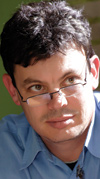
This sentiment is echoed by Naidoo, who says “I think the biggest risk to consumers in regards to misleading information right now is probably on the lighting side. I am astonished to see claims in the media of a 50% or even 80% saving if you change your lighting. That is impossible since most people’s lighting contributes 20% or less to their consumption. So even if you had to keep all your lights switched off permanently you would not save close to 50%. So consumers are not even properly educated about something as ubiquitous as lighting, never mind less common technologies like heat pumps.”
Even when all the right things are being said and done, there can be unintended consequences, as illustrated by Mostert’s example of Eskom’s CFL rollout. As we all remember, Eskom had representatives going around to people’s houses giving out free CFLs (compact fluorescent lamps) to replace the less energy efficient incandescent light bulbs. This seemed like a great idea until people realised that CFLs contain mercury which is highly toxic, meaning that CFLs need to be disposed of in a special way and therefore should not be placed in the trash.
Eskom subsequently posted information on its website that a take-back system has been instituted whereby people can return their used CFLs to certain retailers who will then see to their proper disposal. Which is all well and good, but this information has been poorly publicised and many people remain blissfully unaware of the dangers.
This all points to the need to ‘package’ the sustainable energy proposition more effectively. This involves education, marketing and financial accessibility.
Education will be most effective if it extends from the consumer and corporate level all the way down to schools. According to the panellists there is also a need for education amongst suppliers and installers. One can easily imagine that there are also parties within the process from government and Eskom who themselves lack a deep understanding of the technical aspects involved.
On the marketing front, there clearly have to be campaigns that will excite people about adopting sustainable energy, while maintaining control over hype, something which would benefit from the involvement of parties such as the Advertising Standards Authority and the Consumer Protection Act. Damon believes that a qualitative approach might be an effective means to catch people’s attention – something along the lines of illustrating the energy requirements for a hot shower or a cold beer, concepts which resonate louder with the man in the street than statistics and percentages. He also adds that there is no shortage of international examples of consumer programmes which could be followed.
With regards to financial accessibility, this encompasses more than cost, rebates and so forth. Since most people will not be able to fork out the cash required to buy a solar water heater or a heat pump, there need to be financing options in place. SESSA is currently in talks with major banks to develop ways whereby people can gain access to medium-term loan agreements tailored specifically for the purchasing of sustainable energy solutions.
Government has a key role to play
The significance of government’s role in sustainable energy’s big picture is twofold: not only are they responsible for creating legislative measures, they are also potentially one of the industry’s largest customers.
According to Mostert, “Government needs to get more seriously involved. I would like to see them commit to projects. They have drawn up the draft document on alternative energy that plans the next 25 to 30 years or so; however there has been no action on the ground. There are many applications, from affordable housing to infrastructure development. These are very large scale developments and although they are busy with something, we do not see a change in pace to try and accelerate it.”
Asked about the reasons behind the apparent lack of urgency, Mostert offers the opinion that we could benefit from international examples. “Countries such as the US and Germany have had these programmes in place for many years; decades in fact. Instead of trying to learn from those guys that already know, I think we are trying to reinvent the wheel here. There also seems to be a bit of a power struggle between the Department of Energy, Eskom, NERSA (the National Energy Regulator of South Africa) and whoever is going to control this whole thing, especially with the supply agreements and so forth. So there is some internal politicking which is frustrating the market a bit.”
Nast adds: “The experience that we hear from many of our suppliers is that even in Europe, adoption was slow until there was legislation to force the issue. We get a lot of interest from people wanting to look at alternative energy, but they are only wetting their feet at the moment because everything is still to fluid, nothing is certain. There are no fixed projects so everybody is just trying to get ready so they can dive in when the starting gun finally goes off.”
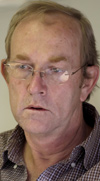
Damon pointed out that one area where government has taken the initiative is in the inception of a new building standard which requires that 50% of the hot water needs of newly built domestic and commercial buildings must be provided by either a solar water heating unit, heat pump or renewable energy source.
In closing, there is little doubt that sustainable energy has a major role to play in South Africa’s energy future. Although the market is gradually gathering pace, there is wide agreement that it will struggle, and likely fail, to gather momentum until the government puts its weight fully behind the process in the form of legislative and funding efforts.
© Technews Publishing (Pty) Ltd | All Rights Reserved